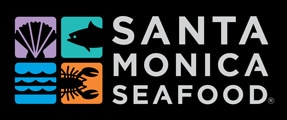Sustainability Rating:Grey – Unranked What:Sometimes called “Clown of the Sear” or “Rainbow Tilefish” due to its wild and colorful patterning, this is a beautiful and delicious fish. When:Available Sporadically Year-Round Where/How:Where – Mid-Atlantic/Southern New England How – Wild Caught/Longline Back to Product Guide Characteristics Tilefish is one of those fish you may hear termed “poor man’s lobster” because it …
Skate
Sustainability Rating:Red – Avoid What:We refer to the edible fins of the skate as “wings”. When:Available Year-Round Where/How:Where – Virginia, Delaware, Massachusetts, Maine How – Trawl Back to Product Guide Characteristics Skate has a flavor somewhat similar to scallops – a fact that seems to support unfounded rumors that round pieces cut from large skate wings used to …
Sea Bass, Black
Sustainability Rating:Red – Avoid What:A relative of Grouper, Black Sea Bass is a popular commercial and recreational species found along the East Coast. According to NOAA, “there are two separate stocks of Black Sea Bass in the Atlantic, divided at approximately Cape Hatteras, North Carolina. Declared overfished in 2000, the Mid-Atlantic stock (north of Cape Hatteras) has recovered and is …
Oysters, Watch Hill
Sustainability Rating:Green – Best Choice What:Farm Raised Eastern Oysters When:Available Year-Round Where/How:Where – Winnapaug Pond – Westerly, Rhode Island How – Farm Raised Back to Product Guide Characteristics Watch Hill oysters are carefully handled to produce a deep cup. Although they have a high salinity, they finish buttery and smooth. They average about 3.5″ For Your Menu These …
Oysters (wild), Wellfleet
Sustainability Rating: What:Wild Harvested Eastern Oysters When:Available year-round (weather dependent) Where/How:Where – Wellfleet Harbor in Cape Cod, Massachusetts How – Wild Caught/hand picked Back to Product Guide Characteristics Wild Wellfleet Oysters are naturally setting oysters that attach to rocks and shells. They take 3 years to grow to market size at which point fishermen pick them at low tide. …
Monkfish
Sustainability Rating:Yellow – Good Alternative What:When we say monkfish, we really just mean monkfish tail, as that’s about all the makes it to market (as well as the livers, which are delicious) When:Available Year-Round Where/How:Where – East Coast How – Wild caught; trawl, gillnet Back to Product Guide Characteristics Monkfish tail was historically referred to as “poor man’s lobster” …
Crabs, Soft Shell
Sustainability Rating:Yellow – Good Alternative What:Molting Blue Crabs harvested to take advantage of their “soft shell” When:May – September (Fresh) Where/How:Where – Mid-Atlantic (USA) How – Wild Caught/Traps, Pots Back to Product Guide Characteristics Soft Shell Crabs are a seasonal favorite! The most popular way to serve them is fried whole, on a sandwich (or as part of …
Crabs, Blue
Sustainability Rating:Yellow – Good Alternative What:Blue Crabs harvested from US waters When:Pre-Order Only Where/How:Where – USA How – Wild Caught/Traps Back to Product Guide Characteristics Blue Crabs are an iconic East Coast Seafood. It’s hard work to extract their delicious, sweet meat from their legs and bodies, but is a fun social event that people love! For Your …
Bass, Wild Striped
Sustainability Rating:Green – Best Choice What:Wild striped bass (often called “rockfish” on the East Coast) When:Available Year-Round Where/How:Where – Virginia, Maryland How – Wild Caught; Longline Back to Product Guide Characteristics Wild striped bass is a well managed fishery; coastal states work within strict quota limits. Wild striped bass have firm meat that cooks up velvety and flaky, …
Oysters, Misty Point
Sustainability Rating:Green – Best Choice What:An Eastern oyster cultivated in Virginia When:Available Year-Round Where/How:Where – Virginia How – Farm-raised Back to Product Guide Characteristics Misty Point oysters (Crassostrea virginica) are from the renowned growing area of Pope’s Bay, Virginia. These petite, cocktail-size oysters (2″-3″) contain a surprisingly robust flavor. Its briny, earthy, almost sweet meat has a delightful texture …
- Page 1 of 2
- 1
- 2
